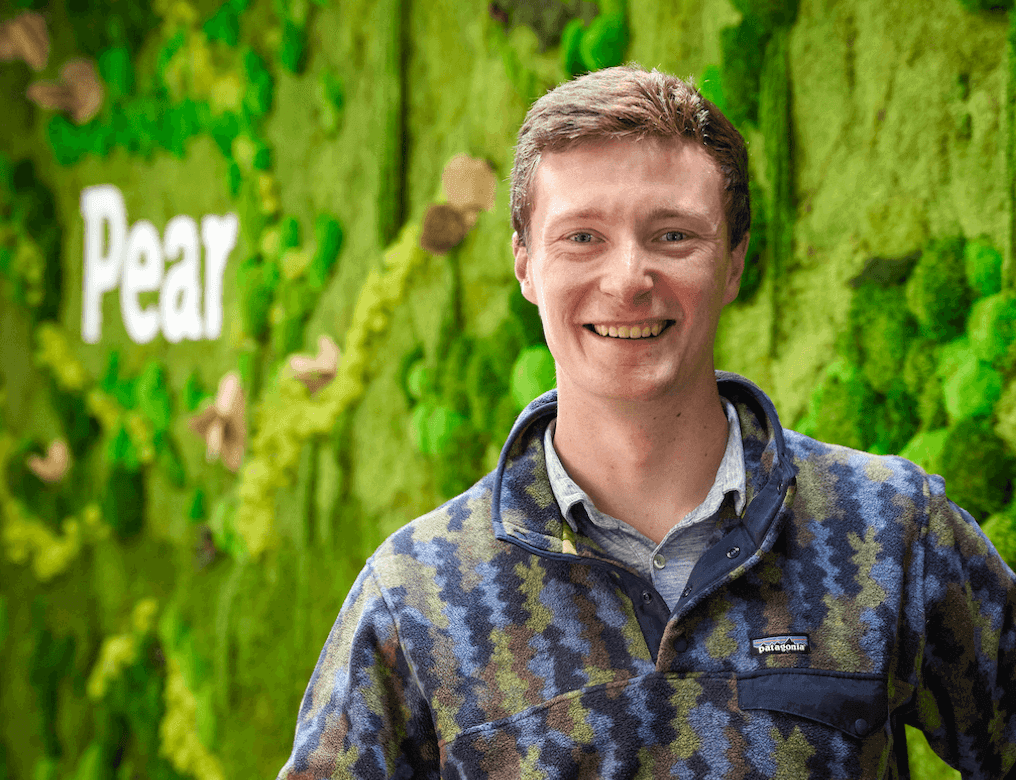In celebration of Earth Day, we’re excited to spotlight a company changing the game when it comes to clean energy and moving the needle on scalable sustainability: Pearl Street Technologies. Pearl Street is a Pear VC-backed company that is making big waves in the clean energy space. Their mission is to accelerate the decarbonization of the grid, addressing the problem from two angles: by delivering software automation solutions to grid operators for timeline optimization, and in providing a risk assessment platform to help project developers successfully deploy and manage more projects. To date, grid operators have processed more than 60 GW of renewable energy and storage projects (equivalent to almost 200 million solar panels!) across more than a dozen states using Pearl Street’s software, reducing months of engineering effort to a matter of hours.
In this Q&A with David, Co-founder of Pearl Street Technologies, we explore their unique approach to solving some of the biggest challenges facing the clean energy industry today.
Can you tell us more about interconnection bottlenecks that are getting in the way of clean energy being deployed in a scalable way?
Before I do, it’s helpful to first define the term: “interconnection” is shorthand for the engineering study process to evaluate the potential impacts of one or more energy generation projects on the electric grid. Grid operators or utilities run these studies to make sure the power grid is capable of handling the proposed amount of generated power, and if not, to identify what upgrades to the grid are needed to handle that power without compromising reliability. The costs to pay for these upgrades are then returned to the developers of these potential projects, who decide if they want to move forward in the process (i.e., agree to pay those costs to upgrade the grid) or withdraw their project (i.e., decline to pay those costs, and therefore lose their ability to interconnect to the grid). Generally speaking, the interconnection process ends with a signed “generator interconnection agreement,” or GIA, between the project developer and the companies that own and operate the grid where the project is located.
The amount of time it takes to complete all the phases of an interconnection study is measured in years in most parts of the United States. The number of renewable energy projects submitted for interconnection has exploded over the last few years, and these two factors together have led to “interconnection bottlenecks.” There are a lot of projects to study, the studies take a long time, and as a result, we have gridlock. No pun intended.
How is Pearl Street working to accelerate this process?
Our software automates some of the more time consuming aspects of running interconnection studies, particularly around creating the simulation models on which the studies are run. These models are just snapshots of what the grid would “look like” with the new projects added, built from similar models of what the grid would look like without those projects (i.e., the default plan). But they’re not trivial to create – interconnection studies often involve modeling dozens or even hundreds of proposed projects, which represents a very big change over that default plan. Without getting into the weeds of the math, what our software does is automate the creation of these study models by adjusting existing grid facilities (like older fossil fuel plants) and at times the placement of new facilities required to support the new projects without causing a blackout. Through our software, weeks or months of engineering effort is reduced to minutes. So the bedrock of these studies gets built much faster in a repeatable, automated way.
Through our software, weeks or months of engineering effort is reduced to minutes.
Your new product focuses on helping developers better deal with risk and uncertainty in deploying renewable energy on the grid. Can you share some examples of how this product will help your customers overcome these obstacles?
Interconnection being a years-long process and the explosion in proposed renewable energy projects has become a huge driver of uncertainty for developers. They’re constantly trying to answer: What will my interconnection cost be when the study is finally done? What happens if a nearby project reduces its size? What happens if a project I was counting on to pay for a grid upgrade withdraws? What if it doesn’t? There are a ton of variables, and today, no scalable way to assess their impacts to inform decisions on projects. But with the same technology we’ve developed for grid operators to quickly build simulation models, we’ve created a platform to provide developers the ability to model and analyze all of the scenarios they care about and finally get a comprehensive sense of their “interconnection risk.” With our interconnection intelligence platform, they can answer the questions above and not just choose better locations for projects, but make better decisions along the way to improve the odds of signing a GIA. Interconnection will still be a tough hurdle, but we’ll be offering the first real solution to help grapple with the massive uncertainties.
We hear a lot about the problems getting in the way, but rarely the solution, so that is very cool. What sets Pearl Street Technologies apart from other companies working in the clean energy space, and what do you see as your unique value proposition?
We have an incredible team behind what we do. We bring together experts in simulation, optimization, software engineering, renewable energy project development, grid planning, and just all around good, motivated people to build technology with impact. We have folks who have developed massive solar and wind projects, and we have folks who have built industry-leading simulation software for nanoscale computer chips. We’re very collaborative and communicative as a company, and as a result we don’t shoehorn ourselves into one way of thinking – there is always an outsider perspective on a problem, and it’s the fusion of ideas from different backgrounds that enable everything we do. I could go on and on about our specific value propositions to different interconnection stakeholders, but at the root of it all is that our customers recognize us as an agile team with a deep understanding of today’s processes without being constrained by yesterday’s ways of thinking.
How do you envision your products contributing to the broader goal of decarbonizing the US energy sector, and what impact do you hope to have in this regard?
The Energy Information Administration estimates that electricity generation in the United States is responsible for 1.5 gigatons of annual carbon dioxide emissions – that’s about a quarter of the country’s total annual emissions. More electrification is coming – electric vehicles for cars and trucks, heat pumps, data centers – and we want it all to be powered reliably by renewable energy sources. When we talk about accelerating interconnection studies or helping developers navigate the interconnection process successfully, at the end of the day we mean one thing: more renewable energy coming online faster and reliably. To fully decarbonize, we need everything from policy changes to adoption of new technologies to help manage a nation-sprawling machine. But we hope to play a key role in unlocking the flow of clean energy onto the grid.
We hope to play a key role in unlocking the flow of clean energy onto the grid.
As a founder, can you speak to any personal challenges or lessons learned along the way in building Pearl Street Technologies?
Nobody who has met me would ever describe me as an optimist, but it’s not possible to start a company in a notoriously difficult market without at least being somewhat of a dreamer. My biggest challenge since starting Pearl Street has been balancing idealism with pragmatism – I want to see radical change to rapidly decarbonize the grid, but I understand the difficulties involved. Developing a deep understanding of all of the stakeholders in our corner of the electricity industry has been critical to growing Pearl Street, and I’ve found that the more we’ve learned, the better we’ve been able to find those opportunities to sneak some of our idealism into the mainstream.
–
Pearl Street Technologies is a company taking big strides when it comes to accelerating the deployment of renewable energy on the grid. By providing innovative solutions that reduce interconnection bottlenecks and help developers better manage risk and uncertainty, they’re making it easier than ever before for clean energy projects to get online quickly and efficiently. Pearl Street is poised to become synonymous with interconnections of renewables – a crucial gating issue in scaling up clean energy across markets nationwide. We’re excited to see what’s next for this innovative company, and encourage readers to check out their website and Knowledge Center for more information.


